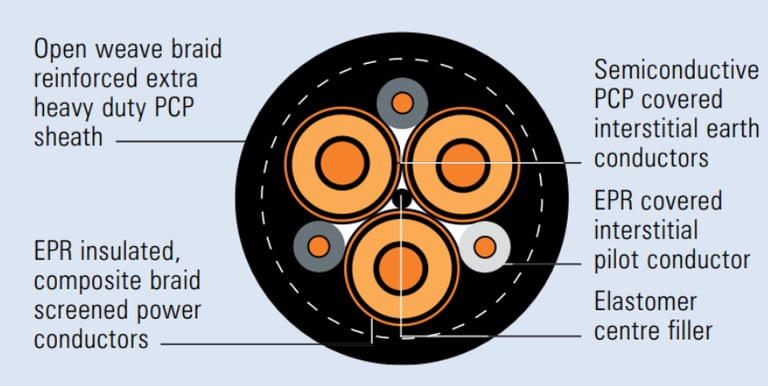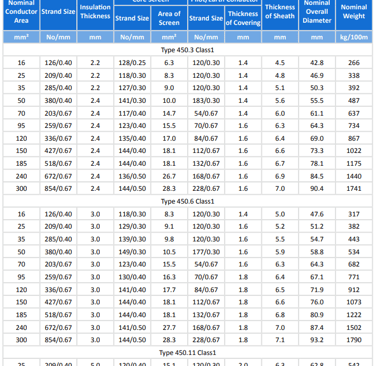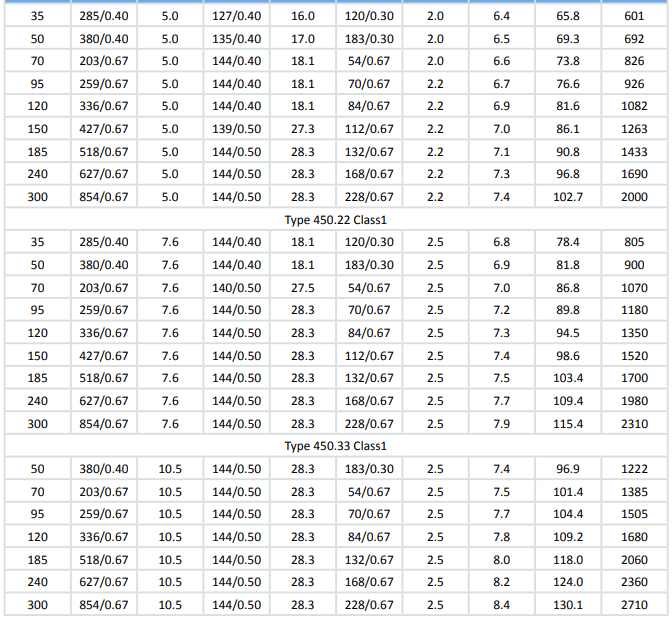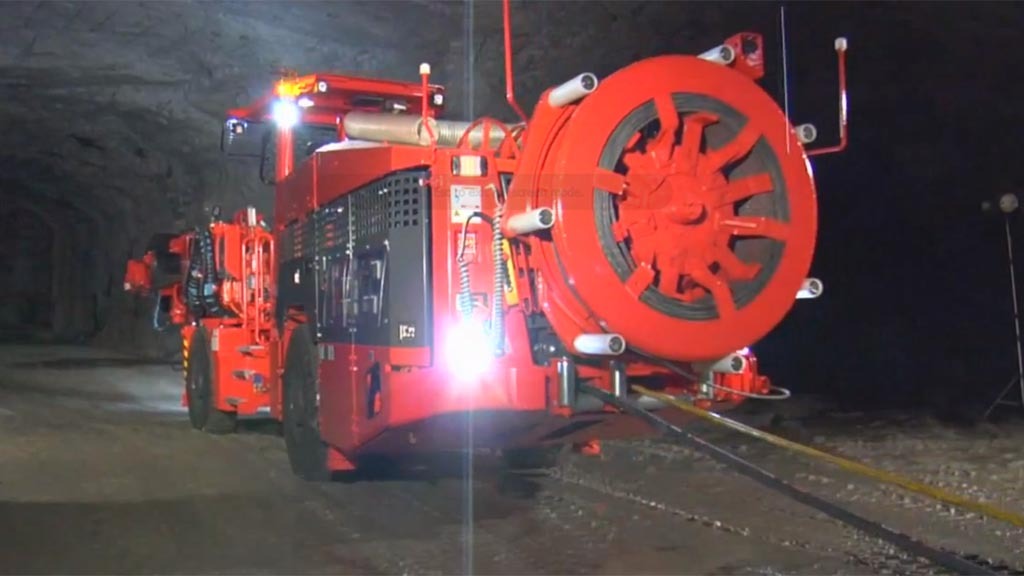AS/NZS 2802:2000 Type 450 Mining Cables
Mining operations demand robust and reliable power distribution systems to ensure both safety and efficiency. The Australian and New Zealand standard AS/NZS 2802:2000 specifies performance requirements for rubber-insulated, metal-screened mining trailing and reeling cables designed to withstand the harsh conditions found in mining environments. Among these cables, Type 450 mining cables stands out as a particularly versatile solution for power transmission in demanding applications.
5/16/20254 min read
AS/NZS 2802:2000 Type 450 Mining Cables
Introduction
Mining operations demand robust and reliable power distribution systems to ensure both safety and efficiency. The Australian and New Zealand standard AS/NZS 2802:2000 specifies performance requirements for rubber-insulated, metal-screened mining trailing and reeling cables designed to withstand the harsh conditions found in mining environments. Among these cables, Type 450 stands out as a particularly versatile solution for power transmission in demanding applications.
Type 450 is a Class 1, metal-screened power cable featuring three phase cores, two earth cores, and one pilot core. Primarily designed for 3.3kV to 33kV operations, these cables offer the perfect balance between durability and flexibility, making them ideal for applications where frequent movement is required.


Application Scenarios
Surface and Open-Pit Mining
In surface and open-pit mining operations, Type 450 cables serve as critical connections between fixed power supplies and moving equipment. They are particularly well-suited for:
Draglines and Electric Shovels: These massive machines require consistent power supply while moving across large areas. Type 450 cables provide the necessary flexibility and durability to maintain connections during operation.
Excavators and Materials-Handling Cranes: The lightweight yet robust construction of Type 450 cables makes them ideal for trailing and slow-reeling applications where equipment moves within a defined area.
Reeling Applications
Type 450 cables are specifically engineered for reeling applications, where cables must withstand repeated cycles of extension and retraction:
Reeling Drums: The cable's construction allows it to be wound and unwound thousands of times without significant degradation, making it perfect for equipment that operates at varying distances from power sources.
Pilot Core Functionality: The integrated pilot core not only provides additional mechanical reinforcement but can also be used for control signals or instrumentation, adding versatility to the cable's applications.
Important Limitation
It's crucial to note that Type 450 cables are not suitable for underground coal mining. The specific hazards present in underground coal environments, particularly the risk of gas ingress and explosion, require specialised cable designs beyond the Type 450 specification.


Electrical & Mechanical Parameters
Voltage and Temperature Ratings
Type 450 cables are available in several voltage ratings:
Standard nominal voltage: 3.3kV
Higher voltage variants: 6.6kV, 11kV, 22kV, and 33kV (as indicated by the type designations 450.3, 450.6, 450.11, 450.22, and 450.33)
Temperature performance is equally impressive:
Continuous operating range: -25°C to +90°C
Emergency operation: Up to 130°C
Short-circuit conditions: Can withstand up to 250°C for 5 seconds without insulation failure
Construction Details
The robust performance of Type 450 cables stems from their sophisticated construction:
Conductors: Flexible stranded tinned annealed copper provides excellent conductivity and corrosion resistance
Conductor Screen: Semiconductive compound (for cables rated 3.3kV and above) ensures uniform electric field distribution
Insulation: Ethylene Propylene Rubber (EPR) offers superior dielectric strength, flexibility, and thermal stability
Insulation Screen: Semiconductive elastomer layer prevents partial discharges
Composite Screen: Tinned annealed copper braiding interwoven with polyester yarn and covered with semiconductive tape provides both electrical screening and mechanical protection
Interstitial Earth Conductors: Two CSP-covered flexible stranded tinned copper conductors ensure effective earthing
Interstitial Pilot: EPR-covered flexible stranded tinned copper conductor for control signals
Textile Reinforcement: Open-weave braid reinforcement increases tensile strength
Sheath: Extra-heavy duty PCP (Polychloroprene) sheath, with CPE/CSP options available upon request, provides excellent resistance to abrasion, moisture, and fuels
Size and Configuration Options
Type 450 cables are available in a range of sizes to match specific load requirements:
Conductor cross-sections ranging from 16mm² to 300mm²
Consistent configuration of 3 power cores + 2 earth cores + 1 pilot core across all variants
Dimensions and Weight





Frequently Asked Questions
Can Type 450 cables be used in underground coal mines?
No. Type 450 cables are not rated for the gassy atmospheres found in coal mines and do not meet the special sheath requirements necessary for such environments. Underground coal mining requires cables specifically designed for those hazardous conditions.
What is the minimum temperature at which these cables can operate?
Type 450 cables can operate down to -25°C in service. However, installation should be avoided at temperatures below -40°C to prevent potential cracking of the insulation or sheath materials.
How many reeling cycles will the cable endure?
Type 450 cables are designed for "slow reeling" applications and can typically withstand thousands of cycles. The actual service life depends on several factors including drum diameter, reeling speed, and tension applied during operation.
How is earth continuity ensured in these cables?
Earth continuity is guaranteed through two interstitial earth cores plus the metal braiding around each phase core. This design ensures a low-impedance path for fault currents and provides comprehensive protection against electrical faults.
What happens under short-circuit conditions?
Under short-circuit conditions, the conductor can withstand temperatures up to 250°C for up to 5 seconds without insulation failure. This thermal capacity ensures safety during fault conditions and provides time for protection systems to operate.
Conclusion
AS/NZS 2802:2000 Type 450 cables represent a specialised solution for power transmission in mining and industrial applications where movement and flexibility are essential requirements. Their robust construction, comprehensive safety features, and versatile performance characteristics make them an ideal choice for surface mining operations and reeling applications. By understanding the specifications, applications, and limitations of these cables, mining operators can ensure they select the appropriate cable type for their specific operational needs.


